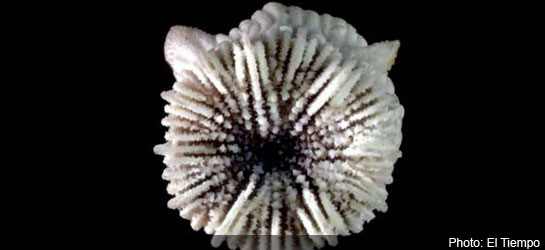
Three new marine species have been found in the deep waters of Colombia’s Caribbean coast.
In the course of a twelve-year project, a team of marine biologists at the Institute of Marine and Coastal research (Invemar) explored depths of up to 700 metres.
They collected samples from a number of distinct taxonomic groups, including echinoderms (starfish and sea urchins), corals and deep-sea mollusks.
After a lengthy identification process, it emerged that two corals (Heterocyathus antoniae and Stephanocyathus isabellae) and one mollusk (Striocadalus magdalenensis) have never been scientifically described before.
The corals were found in water between the Cabo de la Vale, on the Guajira peninsula and the San Bernardo islands, in waters ranging from 408 to 732 metres. The corals are called deep ‘scleractinians’ due to their hard body made of Calcium Carbonate.
The one scapholopod mollusk or “Tusk shell,” was found in Bocas de Ceniza at the mouth of the Magdalena river. Not only is the genus it belongs to a first sighting in Colombia, it is also the first time it has been found in deep Atlantic waters.
“The Tusk Shell has not been found anywhere else ” explained Adriana Gracia Clavijo, mollusk specialist at Colombia’s Museum of Natural Marine History.
Gracia explained that the specimens were collected by dragging a shrimping net across the sea floor to see what could be found in the sediment. The samples were then sent to the U.S for identification at the Smithsonian Institute where it was established definitively that there were no similar known species.
For Milena Benavides Serrato, curator of the museum and head of Invemar’s taxonomy, the most remarkable aspect of the discovery is being able to keep the specimens in Colombia, as part of a collection on marine biodiversity in Santa Marta.
“We are contributing to the knowledge of the deep seabed, which in Colombia was being forgotten,” says Benavides.

